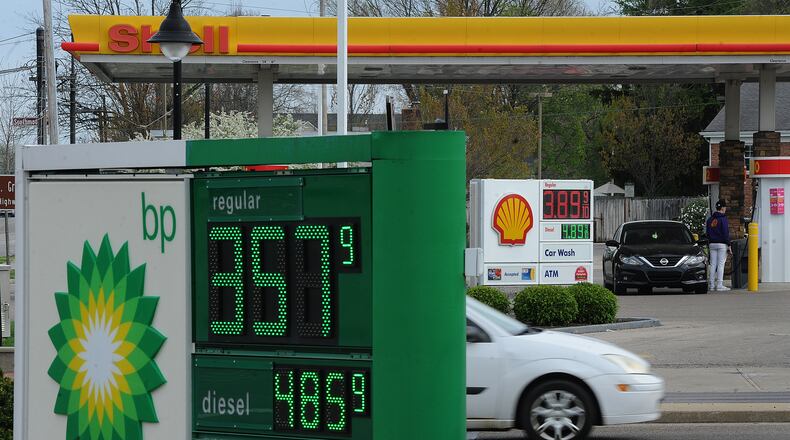Upward pricing pressure on concerns that less Russian oil will enter the global market is counterbalanced with fears of a COVID-induced economic slowdown in China, the world’s leading oil consumer, according to AAA Club Alliance spokeswoman Kara Hitchens.
“These opposing forces are causing the oil price to hover around $100 a barrel,” Hitchens told this news outlet. “Our analysts are saying as long a oil prices are elevated, gas prices struggle to come down.”
Much like the threat of nuclear war, the mention of COVID “can stop the heartbeat of an economy without any action at all,” according to Tim Snyder, an economist with Dallas-based Matador Economics.
The COVID threat alone “quickens one’s blood pressure, but when the Chinese Government report record deaths from the BA-2 subvariant, and the use of steel barriers between Chinese cities, this subtext has concerns running wild across the globe,” Snyder said Monday in his daily energy brief.
With that news, the price of crude oil is down nearly 4.5%, he said.
The national average price of gasoline rising for the first time in more than a month is primarily due to oil prices that had jumped the prior week, pushing up the price that stations pay for fuel and thus causing them to raise prices, said Patrick De Haan, head of petroleum analysis at GasBuddy, which tracks fuel prices.
The price of oil could end up bouncing back by the end of the week, De Haan said.
“Stations had basically gone six weeks without increasing prices and the price of oil, in the mean time, has just been absolutely all over the map,” he said. “We just got to a point where after six weeks of stations lowering prices a penny or two every couple of days stations got on the wrong side of things. They were selling at or below cost. That’s usually what triggers one of these restorations, where everyone kind of goes back up to where they should be.”
Some of the stations in the Dayton and Springfield areas that were “well under cost” on Monday will see price increases throughout this week, some by as much as 50 or 60 cents, De Haan said.
“The $3.99 level is where most stations are going to go to,” he said. “Everyone is going to go up, the question is how stations will do it.”
As soon as prices at stations locally and statewide make the leap to a higher price, they’ll start to inch back down “because that’s the way it always goes,” De Haan said.
Wide gaps in pricing at neighboring gas stations are likely just a case of one station that has already raised prices while the other one holds on as long as it can before doing so itself.
During that small sliver of time when the two stations are priced differently, the more expensive station will wait to see if its rival increases its price.
“A lot of these station under $3.60 (Monday) are selling at a loss, so they’re looking to raise prices, but they need their competition to go with them, or they have to go right back down,” he said.
Ohio ranked among the nation’s top 10 least expensive markets, according to AAA. The other nine were Georgia ($3.71), Arkansas ($3.74), Missouri ($3.75), Kansas ($3.77), Oklahoma ($3.77), Mississippi ($3.77), Texas ($3.77), South Carolina ($3.78) and Kentucky ($3.79).
The top 10% of U.S. stations average $4.56 per gallon, while the bottom 10% average $3.58 a gallon, according to GasBuddy. The states with the highest prices are California ($5.67) Hawaii ($5.19) and Nevada ($5.07).
About the Author

